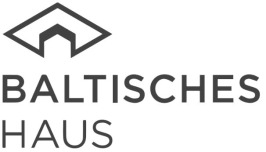Šv. Mykolo st. 9
The new exhibition at the Church Heritage Museum focuses on the development of the landscape genre in Western European art, as well as poetry and the sensory experiences of visitors.
The exhibition “The Cosmic Choir. Landscapes in Sacred Art and Literature” brings together for the first time works from the collections of Lithuanian museums, including pieces by Albrecht Dürer, Peter Paul Rubens, Giovanni Bellini, and other masters of Western European and Lithuanian art. These works, gathered in one space, tell the story of how the perception and depiction of nature changed at the intersection of the Renaissance and Baroque periods.
“One of the main highlights of the exhibition is the painting „Christ on the Cross“ attributed to Peter Paul Rubens from the collection of the M. K. Čiurlionis National Art Museum. This early 17th-century work reveals how the landscape began to take on a contemplative role in art. Saints surrounded by nature were meant to inspire internal reflection and promote piety. The same function is performed by excerpts from the poetry of Motiejus Kazimieras Sarbievijus (Matthias Casimirus Sarbievius, Maciej Kazimierz Sarbiewski), which are exhibited alongside contemporary works of art,” says exhibition curator Dr. Tomas Riklius.
The exhibition presents the origins of the landscape genre in Renaissance art, the social and religious changes that led to transformations in sacred art and devotional practices, and later variations of the landscape genre. The focus is not only on general stylistic trends but also on unique phenomena in painting that arose as a result of changing perceptions of nature and religious practices. One such phenomenon is the subgenre developed in Northern Italy, which depicted the Virgin Mary surrounded by a wreath of flowers. A work of this kind can be seen in Lithuania at the Church of the Pažaislis Monastery.
“In this exhibition, we wanted to draw attention to what is often overlooked as insignificant and only valued as a background —i.e., the depiction of nature in old art. This issue is explored in greater depth in the exhibition catalogue, which discusses the development of landscape in sacred art from the Renaissance to the Baroque,” says Rita Pauliukevičiūtė, Director of the Church Heritage Museum.
Alongside the art pieces and excerpts of Sarbievijus‘ poetry, visitors’ senses will be engaged by a specially created sound installation by Marius Juknevičius, which revives the sound of Sarbievijus‘ poetry in Latin, and a fragrance composed by Vilius Malinauskas, evoking the harmony between sacred space and vegetation.
Buy tickets
Curator dr. Tomas Riklius
Coordinators: Indraja Kubilytė-Bogan, dr. Laura Petrauskaitė, Akvilė Melkūnaitė, Ramunė Savickaitė, Greta Šenderovienė
Architect Sigita Simona Paplauskaitė
Designer Jurgis Griškevičius
Exhibition installation works were carried out by Martynas Jakaitis
Sound designer Marius Juknevičius
Lighting designer Justas Bø
Scent created by „Smells Like Spells“
Copy-editor Audra Kairienė
Translator Greta Kaikarytė
Exhibits were loaned by: Mikalojus Konstantinas Čiurlionis National Museum of Art, Lithuanian National Museum of Art, National Museum – Palace of the Grand Dukes of Lithuania, Vilnius University Library, The Lithuanian Art Centre TARTLE, Kaunas Archdiocese Museum, Šiauliai “Aušros” Museum, Rokiškis Regional Museum, Kretinga museum ir Thre Samogitian Art Museum.
Museum sponsors: Vilnius Archdiocese, Lithuanian council for culture
Exhibition sponsor Vilnius City Municipality
Media sponsors: bernardinai.lt, “Vaga”, “Artuma”, “IQ”, “Kelionė”, “Magnicifat”







-9a1e5858c9bc43296d9af13b975c8e2f.jpg)